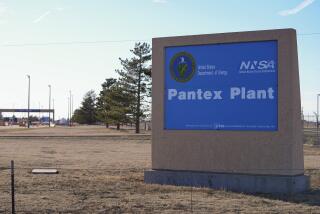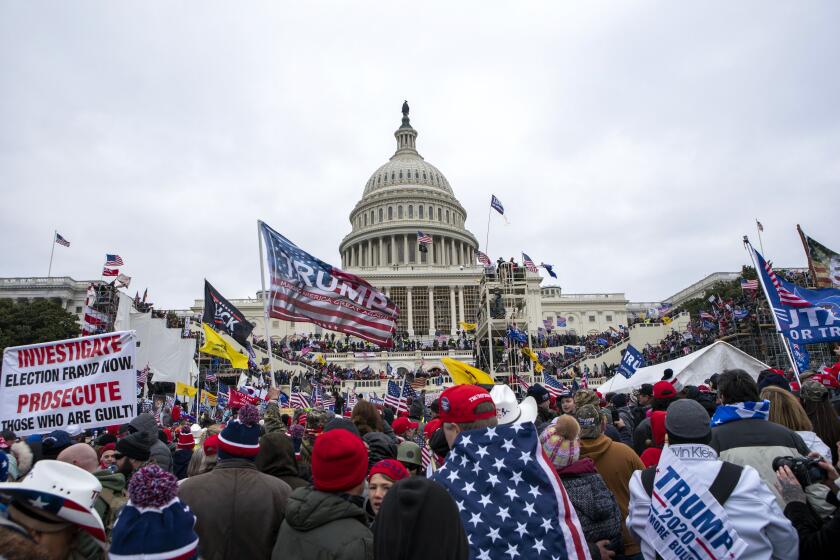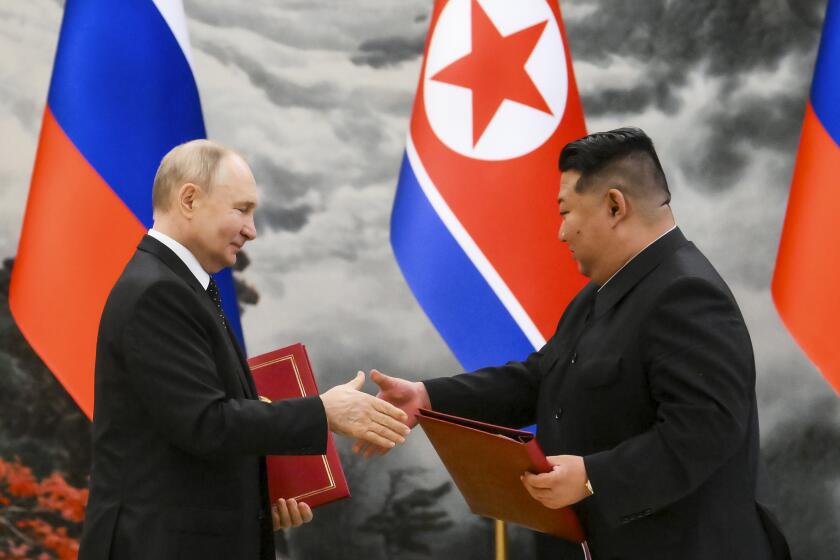All in the Nuclear Soup : Former Soviet nuke plants threaten the world
The answer to the question “Who won the Cold War?” may not be “Everybody,” as some have claimed, but “Nobody.” The Cold War was, preeminently, a nuclear war. It began when the U.S. A-bombing of Hiroshima and Nagasaki ignited a Soviet attempt to catch up and pull ahead. It continued, to be sure, as a competition in other arenas, but the nuclear competition always remained the main event.
As John Thor-Dahlburg’s frightening three-part series last week on the nuclear pollution of the Soviet Union shows, it is just that main event that has produced no winners but only a global loser, Planet Earth. The former Soviet Union covered one-sixth of the land mass of the planet, a surface greater than that of the moon. From sea to sea to sea (the Soviet Union bordered on three: the Atlantic, the Arctic and the Pacific), this vast surface is now pockmarked with nuclear pollution whose lethal potential has a life expectancy greater than that of any political order in recorded history.
One more evidence of the folly of communism? No doubt, but if such a judgment is intended to make nuclear pollution in today’s Commonwealth of Independent States their problem and not ours, then the judgment is mistaken. The planet is too small, and the area of the pollution too large, for any area to expect long-term immunity. Chernobyl, whose harmful effects spread as far as Sweden and Italy, has become a household word. Chelyabinsk, a weapons complex in the southern Urals, may soon become one. Dr. Mira M. Kosenko of the Chelyabinsk Institute of Physics and Biology says that to stand on the shore of Lake Karachai, within the 11,000 acre complex, even for a half-minute would be deadly. But in 1967, we now know, when drought exposed sediment on the bottom of the lake, a tornado picked up deadly dust from this “most polluted spot on the face of the planet” and lofted it into the atmosphere. Death can travel through the air or through the water: Astoundingly, the Soviets dumped entire nuclear reactors, including one as large as a five-story building, in the Arctic Ocean.
And, lest we forget, the second-worst-polluted area on the planet, after the former Soviet Union, is the United States, with a nuclear-cleanup bill in the trillions and little will to pay it.
The paradox of nuclear war was always that even if, by some technical calculation, one side could destroy more of the other side’s weapons, both sides would lose because the planet itself would become uninhabitable.
The paradox of the “nuclear peace” is that both sides may still lose, and for the same reason. Nuclear pollution sites are, in effect, as permanent as volcanoes and far more dangerous. Politically and scientifically, humans face no greater challenge than defending against them.
More to Read
Sign up for Essential California
The most important California stories and recommendations in your inbox every morning.
You may occasionally receive promotional content from the Los Angeles Times.










